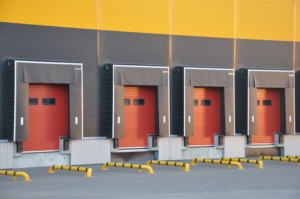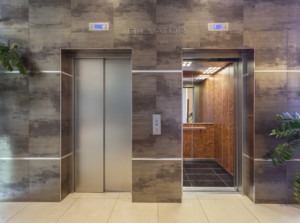A commercial property is defined as a building, structures and improvements located on a parcel of commercial real estate intended to generate a profit. Touring different properties and considering their use can help prepare you to accurately price and develop a general procedure for your commercial property inspections.
Below is a list of the different types of commercial properties and their subcategories.
- Industrial: These buildings typically have considerable square footage, loading docks for trucks, several HVAC units, and several points of electrical distribution, an easily accessible flat roof, and other installed features. Some industrial buildings may also have large refrigerated spaces. Subcategories include:

- Manufacturing Facility: This type of building is used to produce goods or materials and is categorized as either a heavy manufacturing facility or a light assembly facility. A heavy manufacturing facility tends to make heavy-duty products and has large machinery and equipment. These facilities are typically renovated and customized for specific owners and tenants. A light assembly facility tendsto be smaller andsimpler than a heavy manufacturing facility. These facilities also produce smaller goods.
- Warehouse: This type of building is used for general storage and distribution of goods. The layout tends to be an open space, where the ceilings open to the roof’s interior structure. This helps to accommodate high freestanding or installed rack systems. Some warehouse spaces may be dedicated truck terminals, where goods are loaded from one truck to another, and have less square footage for storage space.
- Flex: A building that combines more than one use in a single facility is considered a flex commercial property. An example is an office space combined with and a light manufacturing facility. The identifying factor for this type of property is the amount of office space. There is always more office space in flex buildings than in other types of industrial properties.
- Retail: This type of property is where goods and/or services are sold to customers. An inspection of this kind of property could entail evaluating just one unit or an entire retail complex. Most retail spaces have ample parking areas and bordering sidewalks, while some may have escalators, elevators, and covered parking structures. Subcategories include:
- Mall: This type of retail space is an enclosed shopping center that has many different outlets that may include department stores, food courts, and movie theaters.
- Shopping Center: This is type of property is also commonly referred to as a shopping plaza or strip mall and can vary greatly in size and tenant type. These are open storefronts that have several units under one roof or within one complex. Shopping centers are often home to big-box stores (like Home Depot and Target), along with other smaller shops, restaurants, and convenience stores.
- Pad Site: A pad site is a standalone building, commonly in front or within a shopping center, and its business types often include fast food chains, banks, and restaurants.
- Office: A commercial office is a property that is used by business professionals, medical and dental professionals, tech firms, and more. A standard office space is divided into separate rooms, and typically includes restrooms, and a possibly a residential-style kitchen. Subcategories include:
- Office Building: This type of space is designed for higher occupancy and can range in size from a single-story building to a high-rise. It can contain several electrical and HVAC systems, and if the building has multiple levels, then at least one staircase, and perhaps also an elevator.
- Suite or Condominium: These structures are generally built with the concept that the exterior, roof and common areas are maintained by the owner or property manager, while the various interior spaces are owned or leased and maintained separately by their tenants. These separate areas could be a unit, a floor, or a wing of the building. It could also be a unit within a shopping center or industrial complex.
- Medical or Dental Office Suite: This is generally a larger space that’s divided into several smaller spaces, including offices and exam or treatment rooms. There are typically also a waiting room, restroom(s), HVAC unit and controls, electrical system, and multiple plumbing basins or points of plumbing distribution. The size and complexity of such spaces can vary greatly, and it is also common for these spaces to contain customized and permanently installed structures.
- Multi-Dwelling Unit (MDU): This includes residential properties such as condominiums, apartment buildings and townhomes. The interior of each individual dwelling unit may be familiar to a home inspector, but a commercial inspection for this type of property will require you to inspect more than one dwelling unit and possibly its common areas, which may include a communal pool and spa, and parking structure. The intricacy of this project will vary and depend on the size of the property and the scope of work for the inspection. However, this type of commercial inspection will likely come more naturally to a home inspector.
- Luxury Home or Estate: Although a luxury home or estate is still technically a residential property, these properties may be designed and built with commercial applications or contain commercial features, such as substantial square footage, multiple HVAC systems, and commercial kitchen equipment. This type of property inspection may also require you to provide your services with great discretion, as your client may be a public figure, professional athlete, or celebrity. In this situation, confidentiality is of the utmost importance. For example, posting photos of the property or using any portion of your inspection report as a sample report on your website would violate the norms of discretion.

- Hotel and Lodging: Similar to a multi-dwelling unit, this type of property will entail several individual residential units. The biggest difference is that lodging is designed for temporary occupancy, and will usually include a large commercial kitchen or on-site restaurant. Before inspecting a commercial kitchen, check your E&O insurance policy because commercial kitchens are often excluded in a home inspector’s insurance coverage. Some units, however, may be suites that include multiple rooms, a kitchenette and/or a wet bar, and possibly also an in-room Jacuzzi or spa. It’s likely an elevator will be present.
- Restaurant: This type of property will vary in size and complexity but will generally include a large kitchen with commercial appliances, a storage room or pantry, a refrigerated space (such as a walk-in refrigerator and/or freezer), an office, the dining area, and public restrooms. Before inspecting a restaurant, check your E&O insurance policy because restaurants are often excluded in a home inspector’s insurance coverage.
Some commercial properties may not fall into any of these categories and are considered special-purpose buildings. For instance, casinos, churches, schools, airports, and bowling alleys are categorized as special-purpose buildings. Additionally, a commercial inspector may be hired to evaluate a multi-use property that is a commercial property type that includes both commercial and residential space.
Additional Commercial Inspector Resources:
Types of Commercial and Industrial Buildings Video feat. Rob Claus
About the Commercial Inspection Industry Article

